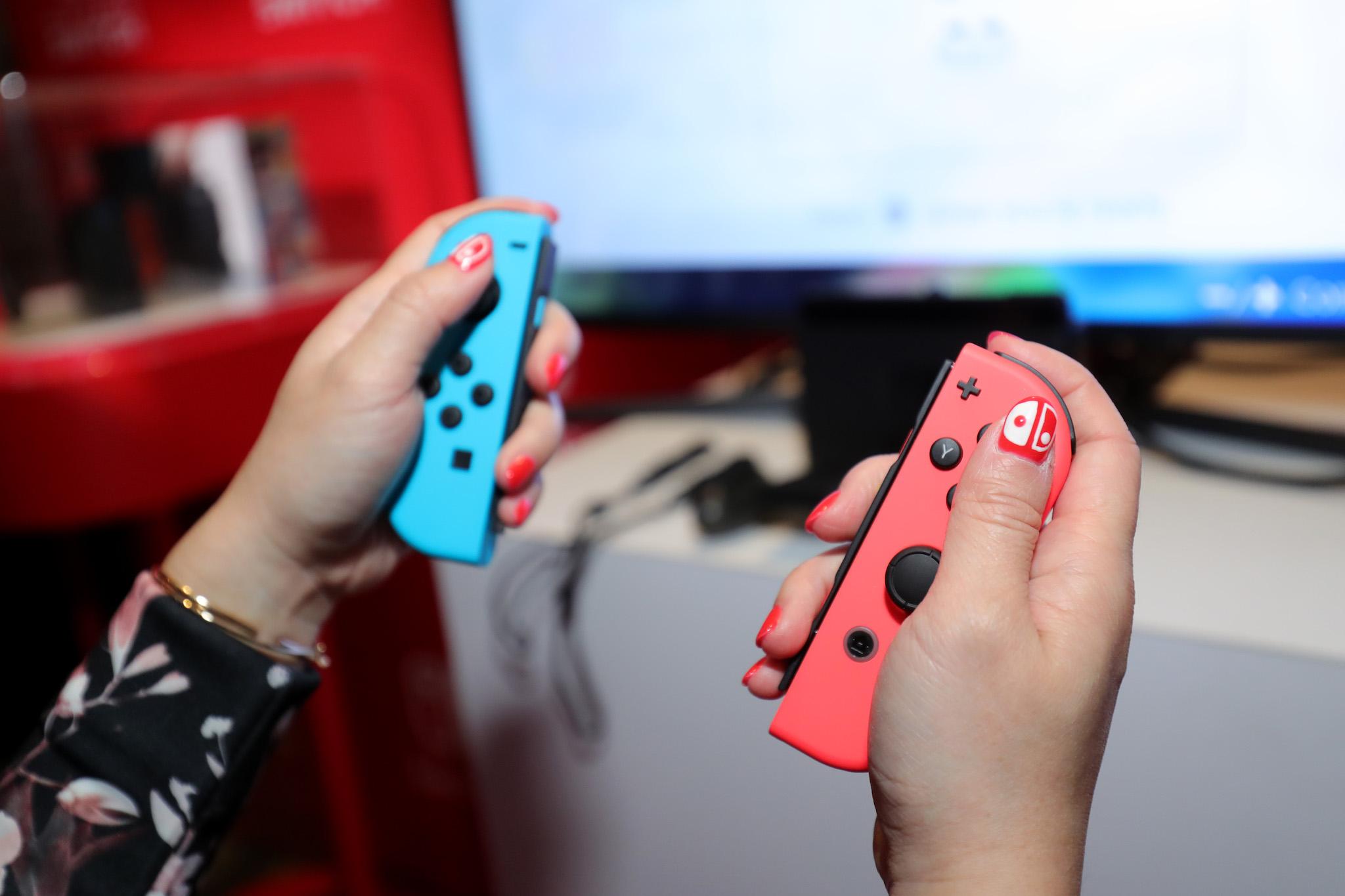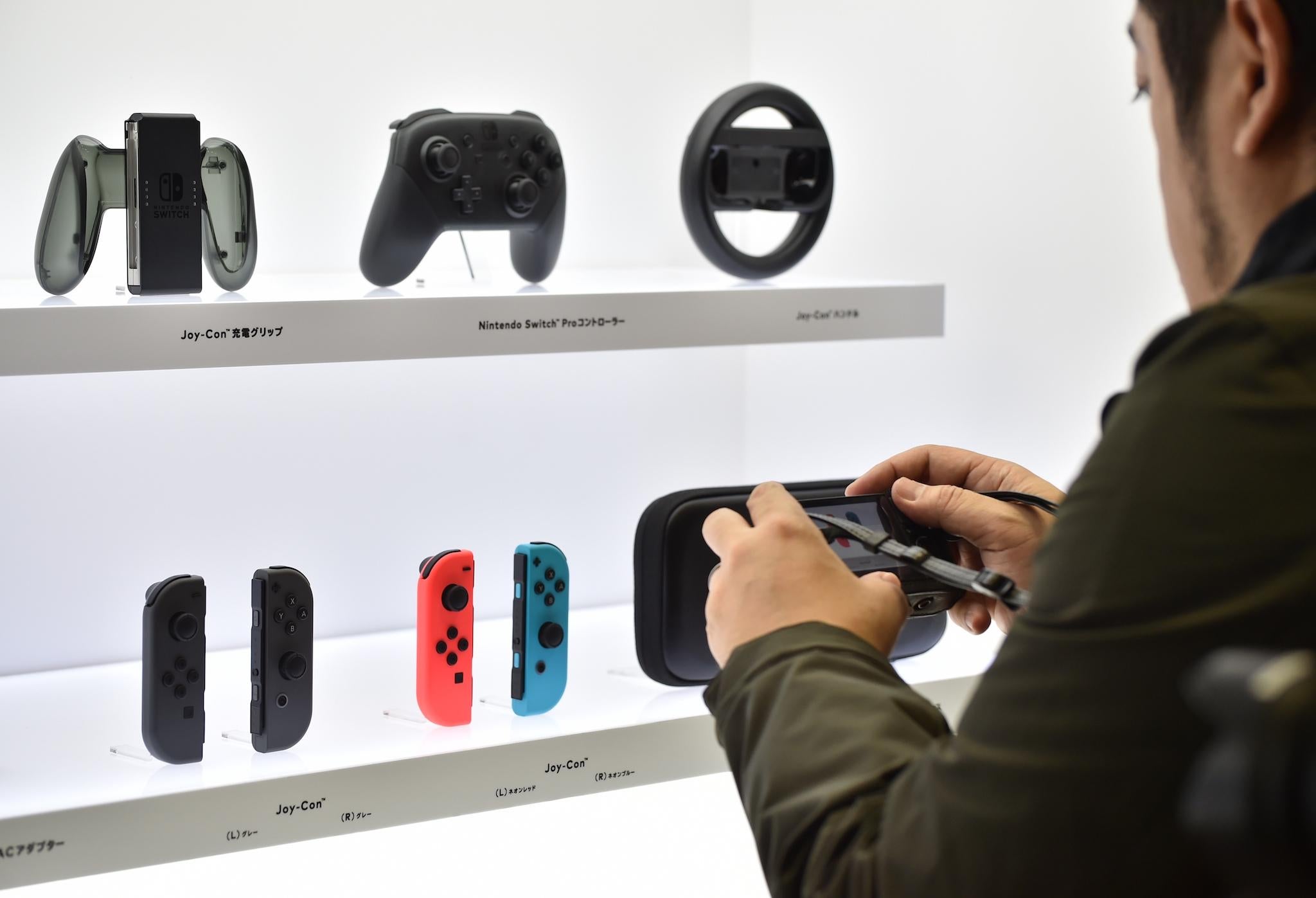Nintendo Switch interview: How perhaps the most important and riskiest console ever made came to be released
The strange machine is better compared to a game of cards or a gunslingers' duel than a PlayStation or Xbox

Halfway through talking to two of Nintendo’s most high-powered executives, one of them pulls a playing card from his pocket. It’s a strangely low-tech demonstration – especially given that they are here to talk about the Nintendo Switch, perhaps the company’s most important console ever made.
But that card makes beautiful sense for at least two reasons. The first: that Nintendo actually started out as a business making handmade playing cards in 1889, and the Switch is a conscious attempt to reconnect with some of the company's long and celebrated history. But more importantly it is a way of understanding the very essence of what the Switch is about, or at least how Nintendo conceives of it – it’s best compared not with the PlayStation or Xbox’s run of blockbuster gaming experiences, but with the fun, social thrill of a game of poker.
“When you have a deck of cards, you can get family and friends together and play games that everyone knows the rules to,” says Yoshiaki Koizumi, the general producer for the Switch, as he hands over that card and suggests that he’s about to perform a magic trick. “It’s very accessible, everyone can sit down and play together, and that became kind of a root for us as we thought about this.
“For generations, people would play eye to eye as they thought about strategy. We wanted to recreate some of that experience using technology.”
That isn’t just a talking point. Minutes earlier, he had demonstrated one of the console’s games – Quick Draw, which recreates a wild west duel and is a part of the 1-2 Switch game meant to demonstrate its main features – and doing so barely involved looking at the console at all, and instead looking deep into each others’ eyes while waiting for a sound. (This is broadly representative of 1-2 Switch but one of the less embarrassing versions of this scenario – 1-2 Switch, which comes as a separate title, also features a game where you pretend to milk a cow at each other.)
Locking eyes with a high-powered Nintendo executive you’ve only just met is a strange experience, but it’s exactly the kind of one that the Switch is precisely designed to engender. Everything about the console – not just that it forces people to look at each other, but the way that it can be carried outside and its two built-in controllers – is intended to encourage people to play with people, and with complete strangers.

“You need a certain kind of hardware to make that social situation possible,” says Mr Koizumi. “And in the past we’ve had that experience with NES and SNES of having two controllers and it definitely felt like the social experience where your friend would come over to your house and play with you, and so we wanted to make that situation not only more possible, but more visible outside the house, to see people playing together like that. It’s the addition of two controllers from the start that makes creating those things possible.
“Of course you could go online and play video games with strangers that you’ve never met before, but something a little bit different is possible here, where you can take the system outside of your house and run into someone you’ve never met before, hand them a controller and start playing right there, and that’s the sort of thing that, when you experience it, makes the other person and yourself very happy.”
That was a focus that was built into the development of the Switch from the very beginning, says Mr Takahashi, director and general manager of Nintendo’s entertainment and planning division.
“With the launch on Nintendo Switch we’re launching with two games, and one of them of course is Zelda, and in this case it’s a Zelda game that’s more than enough, it’s a much larger Zelda game than we’ve ever made before, and so there’s a lot more to experience there than you’ve experienced in past game,” he says. “And obviously that’s for long-time Nintendo fans and long-time gamers.

“And then the other is 1-2 Switch, and as you noted 1-2 Switch is the type of game that’s really suited towards being an icebreaker with groups of people. It’s something that anyone can pick up and play. The original concept for Nintendo switch was trying to come up with these ideas for play which offer anybody the chance to play these games wherever they want, and that was really the genesis of the idea for Nintendo switch.”
But it was careful to ensure that it wasn’t drifting only into being leisurely and silly, but serious too – and sometimes at the same time. Bringing those two things together – fans might call it a synthesis, while critics might call it a compromise – runs throughout the Nintendo Switch and its development: everything is built so that it can do as much as it possibly can, played by as many people as possible and in as many ways as possible.
That versatility can cut two ways, depending on who’s playing it. Were Nintendo aiming to make a console to allow people to do a lot of different things, or a lot of people do what best suited them?
“I really think it’s more of the latter,” says Mr Takahashi, “where everybody who buys the system will end up playing it in the style they prefer best, and it is a system that really is best designed to allow everyone to be able to enjoy their own personal style of play.
“But then simultaneously I think that as people start to play with the system they’ll come into contact with – maybe they’ll see posts on the internet about how other people are playing with the system and they’ll think ‘oh I didn’t realise that I could play in that way’ and they’ll broaden their style of play beyond that.”
That’s built right into the very odd design of the console. It is intended to do just about everything: its name refers to not only switching between being a handheld and portable console or one plugged into the TV, but also switching out the controllers that slot into the side, and switching out what those controllers are.
That was something that was being considered right from the beginning of the console, says Mr Koizumi. The console was built to appeal to as many different people as possible – and, in the end, that meant building a number of different consoles, all bundled up in one.

“In our goal to reach as many people as possible with interesting new gaming experience of Nintendo Switch, we had considered the needs of a lot of different types of people, you have more of the core gamers who want everything out of the system, and you want it to also appeal to people who might just be looking for new experiences and coming into it for the first time perhaps,” he says. “But the thing that we decided that we wanted to focus on in both of those instances was the fact that they could carry it around with them. And not only that they would be able to carry it around but that they would be able to experience the same quality of gaming that they could in their living room outside of the house as well. For that reason we also wanted them to be sharing it with other people when they were outside, and that’s why we included two controllers, so that they could hand one to another person.
“When thinking about trying to provide that play experience and what would be required of the hardware to do it, this is where we landed. In particular, the fact that there are two controllers is especially significant to us.
“When thinking about why that is important, the idea is that in previous generations we’ve had the experience included in one controller only in the hardware, and that really starts to railroad us into a situation of focusing on one player games. We didn’t want that to be the case this time round, we wanted people to go outside of their house and invite others to play with them, so having two controllers from the start was very important for this.
“And we made the colours different so that it would be very easy to understand who was who. That’s how we settled on this iteration of hardware, based on trying to incorporate these various themes that could be applied in these situations.”
That collision between hardware and software – the close co-operation within Nintendo that has allowed it to create classics like Wii Sports in the past, and incipient ones like 1-2 Switch now – is something that the two Nintendo executives are proud of. But it’s also something that’s led it into problems in the past, and what was innovation and ambition in the GameBoy or Wii turned into a confusing failure in the case of the Wii U.
That history is something that hovers permanently over the Nintendo Switch and its entrance into the world. On the one hand, it is glorious: the console comes with the trappings of the gameboy and loved characters like Mario. On the other, it is terrifying given the failure of recent consoles and how much rests on this one – which, however critics view it, has certainly not shied away from taking risks.

Those risks were a constant part of the development of the console, the two men say. The combination of the mobile and home console wasn’t a merging of two projects or an attempt to graft one onto the other, but something that was present throughout that process, for instance.
Carrying all of that baggage into perhaps Nintendo’s biggest launch ever can’t be easy. What do the two executives hope to get out of it?
After detailing the kinds of technological ambitions that the console comes with – the hope that people will get value out of taking their console from their living room to outside, and meeting people in real life and starting games with them – Mr Koizumi suggests that the greatest reward might come in making the Nintendo Switch people’s first experience of such games.
“Speaking as someone whose job it is to make as fun games as we possibly can, one of my biggest goals is to see people who have perhaps never played a game of this type experience it for the first time.
“We want to think about how we can create something that will fit into that person’s lifestyle, and for us that answer is Nintendo Switch.”
It’s a loud, risky, brazen answer – one that Nintendo has bet perhaps its entire reputation on being right. They just have to hope that everyone is asking the right question.